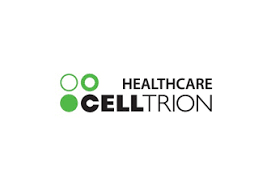- Bone Health
- Immunology
- Hematology
- Respiratory
- Dermatology
- Diabetes
- Gastroenterology
- Neurology
- Oncology
- Ophthalmology
- Rare Disease
- Rheumatology
Celltrion Reports Positive Real-World Findings for Truxima in DLBCL
Postmarketing retrospective studies of the rituximab biosimilar (CT-P10, Truxima) demonstrated comparable safety and efficacy for treatment of diffuse large B-cell lymphoma (DLBCL).
Celltrion Healthcare reported positive findings from a European Union real-world safety and efficacy study comparing the company’s rituximab biosimilar (CT-P10, Truxima) with the reference product (Rituxan) in patients with diffuse large B-cell lymphoma (DLBCL), the most common subtype of non-Hodgkin lymphoma (NHL). Results were reported at the European Hematology Association 2021 Virtual Congress.
Celltrion also released real-world data demonstrating comparable safety and effectiveness of CT-P10 rapid infusion.
CT-P10 treatment data were collected during a 30-month observation period. Primary end points included overall survival (OS) and progression-free survival (PFS), and secondary end points included safety profile and CT-P10 treatment pathways.
At the 30-month point, OS was 74% (95% CI, 69.2%-79.1%) and PFS was 67% (95% CI, 61.3%-72.1%) among patients (N = 382) undergoing first-line treatment with CT-P10.
Among enrollees, a complete response (CR) was observed in 82% (n = 312); partial response (PR), 12% (n = 46); no response or stable disease 4% (n = 16); and progressive disease, 2% (n = 8).
CT-P10 tolerability also was reported to be comparable to the reference product. The investigators said 90% (n = 351) of patients reported 1 or more adverse events (AEs), 65% (n = 253) experienced a grade 3 or higher event, and 28% of AEs were reported as “definitely, probably, or possibly related to CT-P10.”
“This is the first multicountry retrospective postapproval study to investigate the effectiveness and safety of CT-P10 treatment in patients with DLBCL in a real-world setting across Europe,” said Mark Bishton, MD, consultant hematologist and a clinical associate professor at the University of Nottingham, School of Medicine, England.
The European Medicines Agency approved CT-P10 for treatment of rheumatoid arthritis and certain blood cancers, including NHL, in 2017. DLBCL accounts for an estimated 30% to 40% of NHL incidence.
“The response rates, survival rates and overall safety profile for CT-P10 appear consistent with those reported for reference rituximab, which could support the use of CT-P10 in combination with chemotherapy as a therapeutic option for DLBCL,” authors of the study wrote.
Discussing the second study, the investigators said rapid infusion of CT-P10 was generally well tolerated, with 10% (n = 20; 95% CI, 6%-15%) of patients experiencing infusion-related reactions (IRRs).
“We are encouraged by the results of the study, as CT-P10 has demonstrated a similar IRR rate to reference rituximab,” said HoUng Kim, PhD, head of the Medical and Marketing Division of Celltrion.
The investigators said most IRRs were grade 1/2 (96%), and the most common of these were fatigue (35%), nausea (30%), and vomiting (15%). Patients achieving CRs and PRs over 6 months of observation were 74% and 22%, respectively.
“The recommended protocol for rituximab infusion in Europe is a slow initial infusion rate with a gradual upward titration. Rapid infusion is often used in subsequent infusions for patients who had no serious complications related to the first infusion,” Kim said.
Newsletter
Where clinical, regulatory, and economic perspectives converge—sign up for Center for Biosimilars® emails to get expert insights on emerging treatment paradigms, biosimilar policy, and real-world outcomes that shape patient care.


